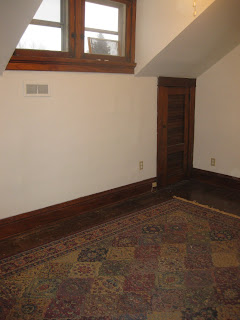2016
Maumee's Beginnings
Anthony Wayne at Fallen Timbers,
1794 was a critical year for what would become Maumee Ohio.In 1792, President George Washington named General Anthony Wayne, Commander-in Chief of the American Armies. In that role Wayne took up the task of raising and training a reorganized army of the west known as the Legion of the United States. Wayne moved fast! By July of 1794, the Legion of the United States and units of the Kentucky militia began a march to the Miamis (Maumee) Valley, the refuge of the Native American Indian Confederacy.
 |
| Native American Warriors and their families repulsed by English Troops at Ft. Miamis |
American victory at Fallen Timbers/Native American Tragedy at Ft. Miamis
By mid-August, Native American warriors and their families had retreated to the lower rapids of the Maumee and were preparing to make a stand near the newly built British military post, Fort Miamis. On Aug. 20, 1794, Wayne's army attacked the Confederacy at Fallen Timbers. The battle lasted less than an hour. The fleeing Confederacy raced toward Fort Miami, where the British had promised protection. They were turned away because the British did not want to risk war with the United States.Wayne's victory at Fallen Timbers ended for all time the power of the British on American soil. In 1795 The Treaty of Greenville was signed making the territory safe for the gradual development of the Village of Maumee.
Famous Combatents at Fallen Timbers and Ft. Miamis
Among the leaders of the Legion were General "Mad" Anthony Wayne, Capt. William Clark (later joined by Meriweather Lewis), and William Wells, Chief of Scouts. The Native Confederacy was lead by Little Turtle (Miami), Blue Jacket (Shawnee), Little Otter (Ottawa), Crane (Wyandot) and Buckongehelas (Delaware). Also present was Tecumseh.
Posted by David Graham and Harriet Warnock-Graham 0 comments
Corey Street and Ft. Miami Neighborhood

 Ft. Miami, today, is a quiet park
Ft. Miami, today, is a quiet park
The Cottage at 819 Corey Street was built during the canal era in the late 1800s or early 1900s.
Bounded on one side by the Ft. Miamis National Memorial, the earthworks of the 1794 English fort on the River Road between Michigan and Corey Streets, and bounded on the other side by the Anthony Wayne Trail, a major thoroughfare that was first an ancient Indian trail, then the old Wabash and Erie canal, and finally a modern highway, the Corey Street neighborhood has plenty of history for those willing to look below the surface of modern streets and houses.
Posted by David Graham and Harriet Warnock-Graham 0 comments
The Cottage at 819 Corey Street
This Home Is Currently Available for move in between October 29 - September 22
Ft. Miami Grade School District
It has:
- living room with recently installed flooring,
- recently renovated dining room with new flooring
- kitchen with recent installed flooring and newer range and refrigerator,
- 2 bedrooms,
- full bath,
- 5 closets and a walk-in kitchen pantry
- large utility room with washer and dryer hook-ups and lots of storage space
- off street parking
- attic space for seasonal storage
- small front yard and small back yard

Rent for 819 Corey is $710+ utilities per month.
This Heritage Home will be available for move in Nov. 1, 2016
Call Harriet at 419 304 7854 for an appointment to view this home.
An initial seven month lease and a security deposit are required.
Posted by David Graham and Harriet Warnock-Graham 0 comments
Labels: Cottage at 819 Corey Street
Subscribe to:
Posts (Atom)


.JPG)















